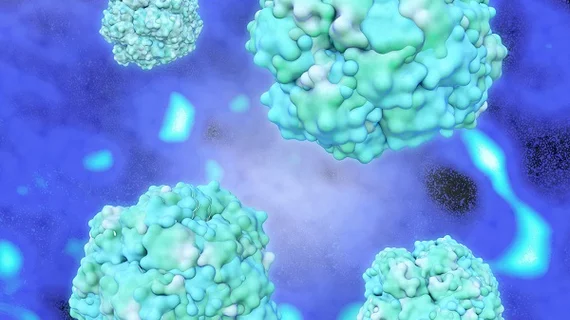A new treatment described as a “transformation” in care recently earned high praise for extending the lives of men with prostate cancer. But the novel development has come with an unexpected imaging dilemma, experts warned Thursday.
Lutetium-177-PSMA-617 radioloigand therapy delivers radiation to cancer cells and greatly extended survival, delayed progression and was well-tolerated among men with advanced cancer, researchers reported during ASCO’s annual meeting in June.
But because more than 85% of screened patients met specific eligibility criteria for treatment, some have questioned the need for PSMA-PET imaging prior to 177-Lu-PSMA. Two Stanford University imaging professionals, however, took a firm stance against this approach in a new Journal of Nuclear Medicine editorial.
“PSMA radioligand therapy for prostate cancer without PSMA-PET should not be accepted,” Sandy Srinivas, MD, with Stanford’s medical oncology division, and Andrei Iagaru, MD, with the university’s Department of Radiology, argued Aug. 24. “We hope the prostate cancer medical community will stand up for precision medicine, including by ordering PSMA (and FDG) PET before treating a patient with 177-Lu-PSMA617,” they added.
Some argue bypassing PET will reduce costs and increase access to therapy, the pair noted. But physicians must accurately define where cancer is before treatment, similar to using chemo or radiation. And selecting those unlikely to respond to radioligand based on PSMA-PET will actually save money in the long run, Srinivas and Iagaru added.
In fact, the editorialists actually believe more PET imaging is likely needed during radioligand therapy to assess mid-treatment response and after patients’ last cycle.
Currently, European Association of Nuclear Medicine guidelines for using radionuclide therapy with 177Lu-labelled PSMA-ligands include PSMA-PET for patient selection. The authors encouraged professional organizations to endorse this guidance and make it part of appropriate use criteria.
In an era of precision medicine, personalizing therapies to achieve maximum benefits should be a top priority, the two argued. That isn’t achievable without PET imaging.
“The additional resources and cost to obtain the useful information from PSMA-PET is a small fraction of what a patient with prostate cancer and the healthcare system will spend from the discovery of an elevated PSA level through referral to specialists, biopsy, surgery, radiation therapy, chemotherapy, hormonal therapy, radioligand therapy and the long-term follow-up of the cancer,” the authors added.

